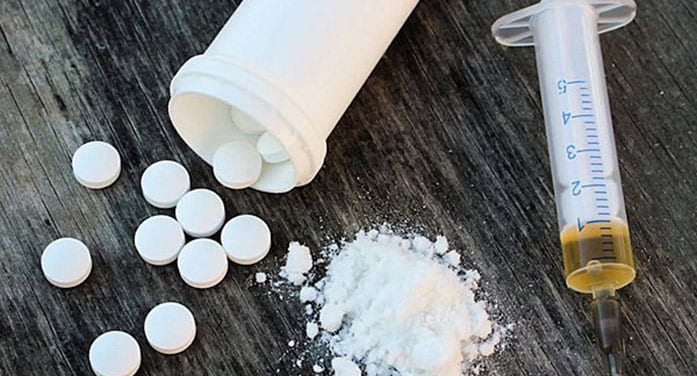A group of University of Alberta science students won $100,000 to help turn a brainstorming session about what could have helped family members avoid a fentanyl overdose into a street-ready solution that will ultimately be a lifeline for those who struggle with addiction.
“We’ve witnessed addiction and overdose in our families, so we were talking about what may have helped and what we kept coming up with was, ‘What if there was something there for people to use in their most vulnerable moments when they’re alone?’” said third-year science student Simran Dhillon.
“People don’t expect to have an overdose, but unfortunately, it happens. Our idea could save so many lives, and it wouldn’t create any additional burden for users.”
Dhillon and her longtime friends and fellow Faculty of Science students Adarsh Badesha and Ajay Gill – who have also seen the toll addiction can take up-close – came up with a syringe that lets users know if what they are about to inject contains a lethal dose of fentanyl.

(From left) U of A science students Adarsh Badesha, Simran Dhillon and Ajaypartap Gill won first prize in the recent TELUS Innovation Challenge with their innovative idea for a syringe with a built-in sensor that can detect a potentially fatal dose of fentanyl. (Photo: Supplied; taken pre-COVID-19)
Judges at the Telus Innovation Challenge held in Calgary earlier in March thought so highly of the idea that they awarded the potentially life-saving product, named FentaGone, the $100,000 first prize.
“Using the syringe doesn’t require any additional education on behalf of the user, and it is really easy for users to use,” she said. “It also doesn’t require them to sacrifice any of the drug, which we’ve seen in our consultations is important.”
The idea received its first boost last spring when, armed with little more than a literature review, the group won the U of A-hosted World’s Challenge Challenge, where they received $10,000 in seed funding.
From there, they teamed up biochemist Joanne Lemieux and pharmacologist Anna Taylor, both in the Faculty of Medicine & Dentistry, and put that seed money to work.
“The U of A has been super supportive in regards to the two labs that we’ve been working with,” said Dhillon. “It’s been great.”
What they created was a detection technology embedded within a conventional one-ml syringe, which Dhillon said works much like a pregnancy test.
In 2020, 1,128 Albertans died from opioid overdoses, the vast majority of which were fentanyl-related. It’s also the single highest annual total, with 2021 on pace to be even worse.
What makes fentanyl so dangerous is that the difference between a lethal dose and a non-lethal dose can be measured in amounts the size of a grain of salt. It’s also, according to Dhillon, known to be in most street drugs now.
She added mass spectrometry is available at many consumption sites to determine the composition of drugs often laced with fentanyl, like heroin, but a lot of people don’t want to publicly test their drugs.
“Most people are dying in their homes, so we don’t even know that they’re doing drugs,” said Dhillon. “How do we help those people, especially if they don’t know there’s fentanyl in their drug?”
And while there are a lot of policy conversations about addiction, Dhillon said there hasn’t been a lot of innovation in this area.
“The technology itself isn’t inherently life-saving, but the information that we provide them is life-saving, and it’s something they don’t currently have already,” she said.
The team has successfully proven the efficacy of the apparatus using chemical analogues, with the next step being to prove their concept with fentanyl present by the summer, followed by clinical trials.
| By Michael Brown for Troy Media
This article was submitted by the University of Alberta’s Folio online magazine. Folio is a Troy Media Editorial Content Provider Partner.
© Troy Media
Troy Media is an editorial content provider to media outlets and its own hosted community news outlets across Canada.


